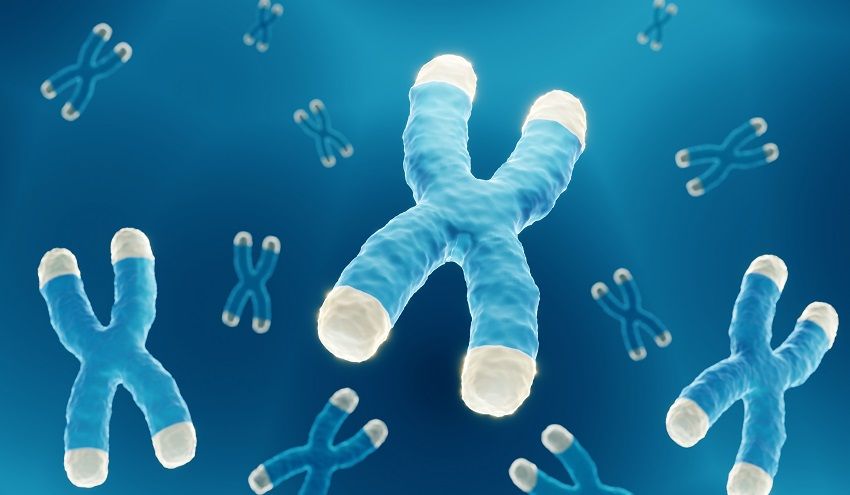Loss of chromosome end protection through telomere erosion is a hallmark of aging and senescence. Telomere deprotection is an epigenetic signal passed between cell generations to ensure that replication-associated telomere-dependent growth arrest occurs in stable diploid G1 phase cells before genome instability can occur. Telomere deprotection, especially during cellular aging, has emerged as a critical area of study due to its implications in various aging-related processes.
 Fig.1 Schematic representation of telomere deprotection.
Fig.1 Schematic representation of telomere deprotection.
CD BioSciences provides comprehensive telomere deprotection analysis services to help customers understand the aging-related dynamics of telomeres. We offer a range of cutting-edge telomere deprotection analysis services that encompass the evaluation of different states of telomere deprotection during cellular aging.
Overview of Our Telomere Deprotection Analysis Services
We have a deep understanding that during cellular senescence, spontaneous de-protection of telomeres undergoes three distinct protective states that regulate cellular consequences. Based on this, we offer the following services.
| Telomere deprotection |
Description |
Our services |
| Closed-state telomere deprotection analysis |
During logarithmic growth, telomeres exist in a "closed state" where they prevent DNA damage response (DDR) activation by sequestering chromosome termini within a protective higher-order structure like a telomere-loop (t-loop). |
Our advanced analysis methods, including telomere length measurement, telomere dysfunction-induced foci (TIF) assay, and fluorescence microscopy, allow for precise assessment of the closed-state telomeres, providing crucial insights into their structure and function during aging. |
| Intermediate-state telomere deprotection analysis |
Telomere shortening due to replicative age or insufficient shelterin saturation can lead to the exposure of chromosome termini, transitioning telomeres into an "intermediate state". |
CD BioSciences specializes in quantitative analysis of intermediate-state telomeres, offering precise measurements and evaluation of their implications in the aging process. |
| Uncapped-state telomere deprotection analysis |
"Uncapped state" is expected to occur spontaneously after telomere erosion removes the shelterin binding sites at chromosome ends and is correlated with cell death at crisis. |
We employ advanced techniques, such as telomere fusion assays, DNA damage response activation, and chromosomal aberration analysis, to assess the uncapped-state telomeres, providing valuable data on their implications for cellular aging and potential cell crisis. |
Our Methods for Telomere Deprotection Analysis
Our methods encompass a comprehensive array of techniques designed to provide in-depth insights into telomere status and potential deprotection. Our methodologies include:
- Telomere length measurement
- Telomere dysfunction-induced foci (TIF) assay
- Telomere repeat amplification (TRAP) assay
- Chromatin immunoprecipitation (ChIP) assay
- High-content imaging analysis
Application of Telomere Deprotection Analysis in Aging Studies
- Cellular senescence
Through our telomere deprotection analysis services, our clients can gain insights into the triggering of cellular senescence and its contribution to aging and age-related diseases.
- Genomic instability
Telomere deprotection can lead to genomic instability, characterized by chromosomal abnormalities and DNA damage. Our telomere deprotection analysis services provide critical information on how genomic instability contributes to the aging process.
- Lifespan studies
We offer telomere deprotection analysis in model organisms and longitudinal human studies, which can be employed to investigate its impact on lifespan and age-related physiological decline, providing valuable information on the aging process.
- Age-related diseases
We provide telomere deprotection analysis in various age-related diseases, including cancer, cardiovascular diseases, and neurodegenerative disorders. Analyzing telomere deprotection in the context of these diseases can help identify potential therapeutic targets and interventions.
The comprehensive telomere deprotection analysis services offered by CD BioSciences serve as a cornerstone in unraveling the complexities of cellular aging. By leveraging our expertise and cutting-edge techniques, our clients can gain valuable insights that pave the way for advancements in aging-related studies and therapeutic interventions. If you are interested in our services, please feel free to contact us or make an online inquiry.
Reference
- Cesare AJ, et al. The telomere deprotection response is functionally distinct from the genomic DNA damage response. Mol Cell, 2013, 51 (2): 141-55.
All of our services and products are intended for preclinical research use only and cannot be used to diagnose, treat or manage patients.



 Fig.1 Schematic representation of telomere deprotection.
Fig.1 Schematic representation of telomere deprotection.

